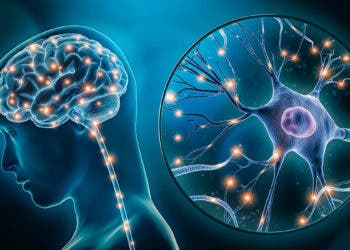It’s the first time the two have been studied together, and scientists believe they could one day be used to treat some mental conditions.
“We’re not developing this so people can have a better rave,” one researcher said.

They call it candyflipping on the street, and while it’s been a known combo since the 1980s, it also caught the attention of researchers in recent years. Candyflipping, the combination of MDMA and LSD, seems to increase the potency and duration of MDMA-like effects, while decreasing the chance of overdosing on MDMA. At the same time, it retains some of the extreme hallucinogenic effects of LSD, making for (presumably) a heck of a ride.
But psychedelics have also emerged as a potential treatment for multiple mental conditions, with multiple trials being carried out, from alcoholism relapse to anxiety. Now, the first mixed LSD-MDMA trial is about to begin.
The trial, a Phase 1 trial on 24 participants, will assess whether the drug combo is safe for human consumption. The trial is carried out by psychedelic drug development startup Mind Medicine Inc., based in New York City. The company’s founder and CEO JR Rahn saying that the drugs could one day pave the way for FDA approved treatments although that day may not come very soon.
The participants will receive different combinations of placebos and drugs; the ones actually getting the drugs will get 100 μg of LSD and 100 mg of MDMA — a substantial dose bound to trigger a hallucinatory experience.
But in addition to triggering trippy experiences, both drugs could (under the right circumstances) have therapeutic potential. MDMA has been shown to induce positive feelings like empathy and trust, while LSD might reduce feelings of anxiety and paranoia. Researchers hope that a combination of the two could optimize the psychedelic experience and, over a therapy session, have a lasting positive impact.
Of course, this shouldn’t be read as “LSD cures your paranoia”. Rahn emphasizes that the drugs are to be used in a specialized setting, under supervised conditions, and even then, the alleged effects of the drugs are to be analyzed.
This marks quite the transition for both MDMA and LSD. Officially considered Schedule I controlled substances (with a high potential for abuse and no medical value), the two have enjoyed surge in interest from researchers, both having the potential to become ‘breakthrough treatments‘. In truth, a minority of researchers have long considered the potential of such psychedelic drugs, but research only recently became possible, as the legislation and the stigma around the drugs eased up.
Already, a nonprofit organization called Multidisciplinary Association for Psychedelic Studies (MAPS) is launching a Phase 3 clinical trial on MDMA-assisted therapy for PTSD — one of the areas where MDMA has shown most promise. If the trial results are positive, the door for treatment approval is essentially open. The LSD-MDMA trial is only the latest of Mind Medicine’s trials. Others include a trial for small, non-hallucinogenic doses of LSD to treat anxiety, while another uses the same approach for dealing with anxiety.
The company stresses that this type of treatment won’t be a regular pill you take, like today’s antidepressants. For Rahn, “staying on a pill a day for the rest of your life” is not a solution. Instead, these hallucinogenic treatments are envisioned as semi-regular treatment sessions. Instead, it would be more like therapy. You’d go on a supervised psychedelic session with a therapist and then have several sessions where you just talk and discuss, and then maybe just have one therapy session a year.
If the therapeutic potential of drugs like LSD or MDMA is confirmed, it could be a major breakthrough in the field of mental therapy. However, for all the hype around this potential type of treatment though, there is still much left to be proven.






